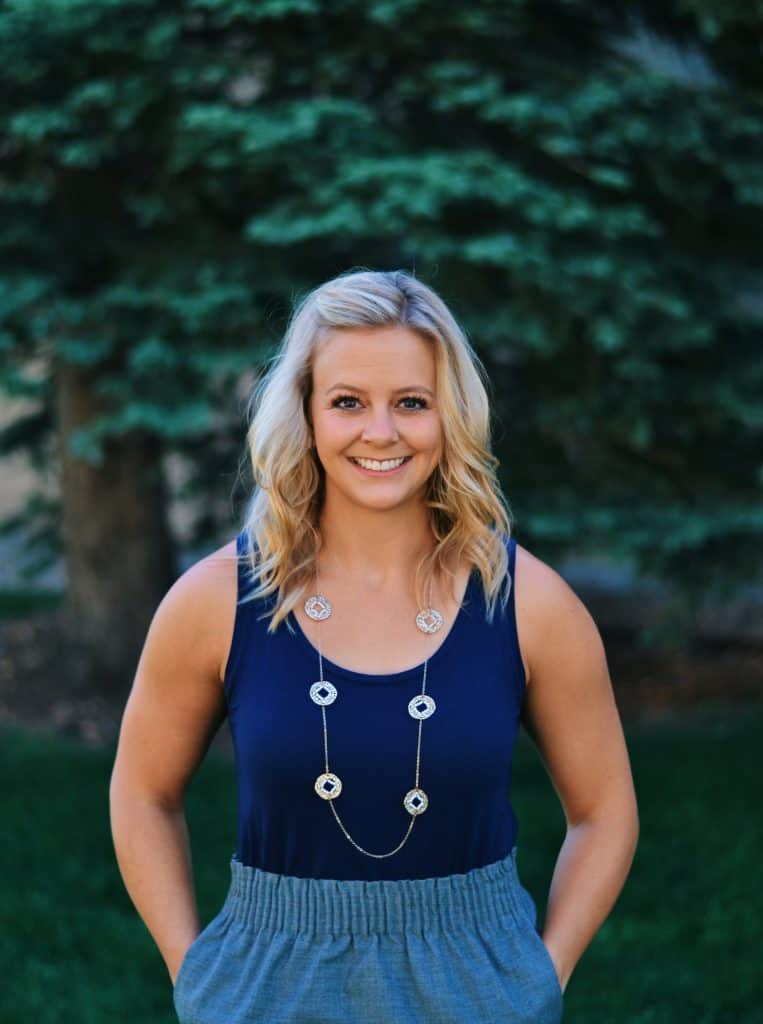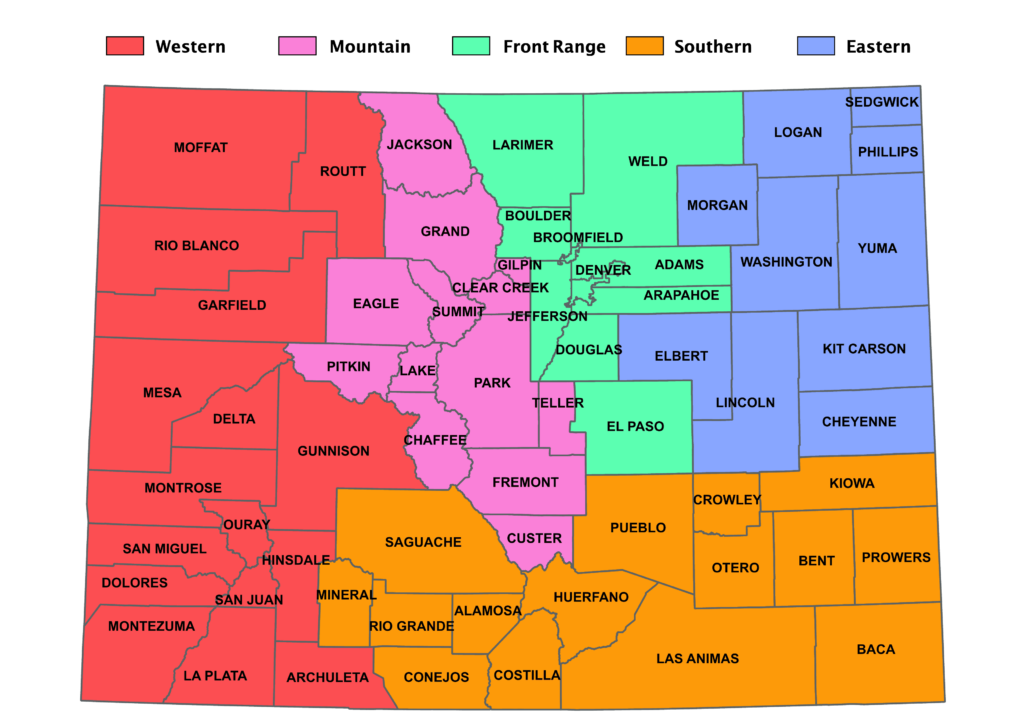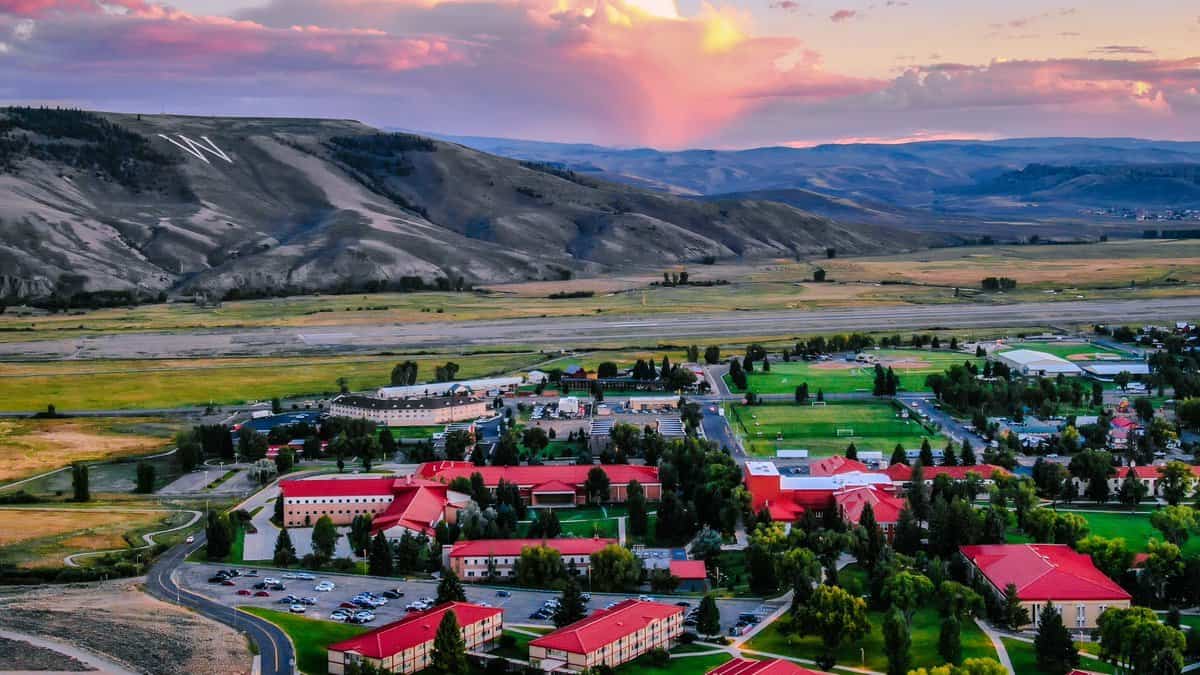As the higher education impacts of Covid-19 linger, Western leans into holistic, test-optional admissions, boasts improved retention rates, and continues selling a vision of a cozy, experiential learning environment to prospective students.
Applications to join Western’s Fall 2023 Class remain open.

“I was a teacher before I found higher ed, and I saw [recruiting and admissions] as something where I could continue to work with students during this really unique time in their lives where they’re figuring out what that next step is after high school,” says Meagan Tracey, Western’s director of admissions and recruitment.
“Just to be a part of that really informative and critical portion of their lives — I found that really exciting.”
Tracey began her career at Western as a recruiter in 2015 working from her home in Lakewood, Colorado. Back then, her personal recruiting territory covered Jefferson County, Clear Creek County, Douglas County, as well as Denver’s public schools.
After a brief stint with Colorado School of Mines beginning in 2020, Tracey came back to Western in 2021 to assume the assistant director position. Shortly thereafter, she was promoted into the directorship role.
“When I had an opportunity to come back, I couldn’t pass it up,” she explains.
Tracey takes great pride in being present for prospective students, from those pondering which college to attend — to those who are wondering if college is the right fit in the first place. On a daily basis, that may mean scouring financial aid packages, seeking out additional resources, or having a heart-to-heart about a student’s personal goals.
“This process is a whole family decision,” she says, adding later, “I think it’s important for students to know that we’ll take care of them from the time we first meet them through to graduation.”
At Western, that process of caring starts with the EPIC Mentorship program, where students meet their assigned mentor as early as the March before their first fall semester.
The mentorship program has contributed to a steadily increasing retention rate that hit 76 percent in the 2021-2022 academic year — including gains across all family income levels. Those improvements came during the pandemic years where enrollment was down across most colleges.
Also down is the school’s “melt rate”, the percentage of students who simply don’t show up when it’s time to start fall classes, despite forking over a deposit.
More broadly, Tracey considers her team’s ability to link prospective students from all locations and backgrounds with current students and personnel across campus as one of the department’s biggest strengths, and a factor that imbues Western with a personalized feel.

The college recruiting scene
Today, Tracey still oversees recruiting efforts in Jefferson and Clear Creek Counties. About half of Western’s recruiting and admissions staff is scattered across the Front Range — from Colorado Springs to Fort Collins, with a designated recruiter assigned to the Denver metro.
This strategic positioning places the staff in a position to cover much of Colorado, with roughly 75 percent of Mountaineers coming from within the state’s borders.
“We all help each other when we need coverage for events,” says Tracey, who notes that the on-campus admissions counselors divvy up the Western Slope.
Western also has a STEM-specific recruiter who focuses on attracting students to the newly-minted Rady School of Computer Science and Engineering, and to other scientific pursuits at Western.
The admissions and recruiting team is always looking to expand their range and capitalize on new opportunities. This past fall, Tracey notes that the admissions team made more than a dozen out-of-state recruiting trips to neighboring and outlying states.
She says the top states for luring future Mountaineers include Arizona, California, Texas, Wyoming, Utah, New Mexico, and Oklahoma.
Another area where the pandemic’s impact was felt was with international students, which prevented applicants from stepping foot on campus due to a host of logistical and travel concerns. Nevertheless, Western has current students hailing from Canada, Barbados, Hungary, and China. Many of those international students are also athletes at Western.
On the domestic front, Tracey stresses the importance of continuing to recruit and serve undocumented but legally protected DACA students, as well as Colorado-specific ASSET students.
Advancing Students for a Stronger Economy Tomorrow, known more colloquially as the Colorado ASSET law, allows certain eligible undocumented students to pay in-state tuition and receive the College Opportunity Fund stipend at participating Colorado public colleges.
Within the Centennial State, high recruiting priority has been placed on El Paso County, which includes Colorado Springs, as well as outlying portions of the Denver metro, like Jefferson County, where application numbers have recently been strong.

But Tracey asserts that the top priority is given to serving students closer to home, especially as the number of these hyper-local students have fallen over the course of the pandemic, for largely unexplained reasons.
“What we really want to do is make sure we’re serving our local students — in Gunnison and Crested Butte and surrounding areas close to campus,” she says. “We’re really focused this year on serving the local community and rebuilding strong connections with our local community,” she explains.
The college application process
Although students have plenty of time to submit their application to Western, even into the spring and summer of their intended fall start date, most applications come in during a condensed period in the fall.
Tracey explains that the majority of Western’s annual applications come in during Colorado’s designated free application days, which take place in October.
During the 2022 Colorado Free Application Days (the 5th annual iteration of the event), which ran from Oct. 18 to 20, Western received 2,046 applications — up more than 600 applications from the 2021 event.
During the three day event, application fees for public Colorado colleges and universities (plus several private schools which opted to participate) are waived for Colorado residents,
In anticipation of the event, Tracey says that many students will prepare their applications ahead of time to submit during the feeless days, which also includes applications for transfer students looking to switch schools.
Unlike many colleges, Western doesn’t have any set application deadlines — opting instead for what is known as rolling admissions — where “students can apply whenever they’re ready.”
Still, the bulk of Western hopefuls will submit applications in the fall (and Western recommends that students looking to start in the fall submit their application before March 1 if possible), although the number of late-acting students surged in 2022.
Tracey explains that high schoolers who weathered the brunt of Covid’s impacts took advantage of the flexibility Western allows to apply, make their required deposit, and enroll well into the summer months.
For those students looking to transfer, or who may have missed the fall application cycle, Western allows students to start in January for the spring semester.
Prospective Mountaineers can submit applications through one of two avenues.
First, there’s the Common App — which allows students to make one generic application and apply easily to more than 1,000 schools across the country (and even a few international colleges in the United Kingdom and elsewhere around the world), or via a direct submission to Western’s specific application.
Tracey notes that the questions are very similar, with the main difference being that Western’s application is slightly shorter. At just $30 for an application, Western’s fee is on the cheaper end of higher education institutions.
Evaluating students in a post-pandemic world
One major change that did take place during the pandemic was that Colorado passed a bill which allows for colleges and universities to switch to test-optional admissions — no longer requiring students to submit ACT and SAT scores.
Western was one of the universities which opted to embrace the pandemic-inspired change.
“We do not require test scores,” says Tracey, who adds that students with good scores are encouraged to share them.
“For example, if a student is below our 50 percent range for our GPA, which is around a 3.12 to 3.93 — [but] let’s say they did really well on their tests and they would like us to take that into consideration. They can ask us to take a look and we definitely will. But otherwise we don’t use them in making an admissions decision, and they cannot negatively impact students,” she explains.
Western’s admissions team utilizes a holistic approach to admissions, taking into account unweighted and weighted GPA, class rank, and a student’s academic progression over time, particularly given the pandemic and the rapid onset of online learning that left many students struggling.
“We especially understand that Covid has really taken a toll,” says Tracey. “Online learning was very challenging for students and we get a lot of information from [them] in a personal statement or an essay, or even explanations that come from the school on the effects of Covid.”
A more personal touch to the application process comes through in student’s letters of recommendation, their “Why Western?” essay, and the personal statement that all prospective students submit.
“We read everything and really love to get to know students personally,” adds Tracey.
Student participation in clubs and student organizations, volunteering, and job commitments also play a substantive role in the final decision.
Because admissions staff will review applications from their specific territories, Tracey says that the recruiter reviewing the materials will often personally know the applicant from a recruiting event, and can weigh the student’s personal interactions and visits to Western in their decision.
“If we feel like we need information from a student we will reach out to ask,” Tracey says. That may entail sending an additional semester of grades, or writing an extra essay to demonstrate their academic readiness.
In recent years, Western’s acceptance rate has hovered around 90 percent, which qualifies the school for the “least selective” category per U.S. News and World Report.
But Tracey doesn’t see the university’s comparatively high acceptance rate as a negative, and predicts that rate may actually increase slightly in the coming years.
She says there are prospective students who could be successful at Western with slightly lower high school GPAs — students who could benefit from Western’s hands-on approach to learning that can better accommodate nontraditional learning styles.
Western’s enrollment holds steady amid higher ed turmoil
Tracey says that Western has been able to keep enrollment up during a difficult time for colleges, as increasing education costs, paired with the Covid-19 pandemic, drive students off four-year college campuses.
Shifts in the market have pushed high school students towards the job market, and to other educational routes at community colleges, or with apprenticeships and trade schools.
“High schoolers are putting more emphasis on career training and post-college employment, ” reads a May 2022 article from CNBC. The article utilizes information obtained by the ECMC Group, a nonprofit aimed at helping students find success, from polls of more than 5,000 high schoolers conducted over the span of two years.
The study found that the percentage of high schoolers planning for four-year college dropped from 71 percent to 51 percent over the course of the two-year study period. Reasons cited included concerns over rising costs, the long length of collegiate study, and the growing belief that college degrees no longer provide sufficient value to outweigh the sacrifices involved.
Statistics from a recent NPR article show that since the fall of 2020, more than one million fewer students have enrolled in college, a trend which disproportionately impacts schools with higher admission rates — and thus less leeway in determining the size of their incoming classes.
Despite all these countering factors, Western’s fall 2022 enrollment fell just six students from 2021’s numbers, which Tracey sees as a big win for the university. Western received more than 3,700 applications for spots in the 2026 class, which began back in the fall of 2022.
The school’s recent freshmen classes are another strong indicator of Western’s ability to weather a difficult time in academia — 467 first-time students enrolled at Western in the fall of 2021, up from 419 in 2020. Before the pandemic, Western enrolled 454 first-time students in the fall of 2019.
One factor that Tracey believes contributed to Western’s strong showing in the pandemic’s first two years was that unlike many Colorado schools, Western’s campus remained open to both visitors and current students throughout.
“We were really lucky to have on-campus visits and to remain fairly open as a campus community during that time, and I think prospective students knew that,” says Tracey.
So, why Western?
On the recruiting trail, Tracey and her staff sell Western to prospective students by highlighting Western’s picturesque location, cozy 16 to 1 instructor to student ratio, and the university’s excellent professors and staff.
Additionally, Tracey says there are variety of other factors that are difficult to quantify but have a huge impact on the student experience.
“You’re never a number or just another face in the crowd on our campus,” relays Tracey. “Your professors know who you are and are there to support you.”
Western’s smaller size means that undergraduate students have access to research or internship opportunities alongside professors and graduate students, and can more easily step into leadership roles in campus clubs and organizations.
Tracey explains that Western’s dedicated professors play a critical role in the campus ecosystem, learning about students and connecting them to ready-made opportunities that align with their budding passions.
Finally, she touches on the opportunity for active, experiential learning — out in the great outdoors (on the two million acres of public land within Gunnison County, not to mention the close proximity to the renowned Rocky Mountain Biology Laboratory), in the classroom with resources like the HAP Lab and the interrelated Wellness Elevated program, and across campus in a variety of forms.
“Students are able to explore all their passions. You talk to students and say ‘what are you involved in?’ and they are a Peer Health Educator, someone who runs in track, plays the violin in one of the orchestras, that’s in [Western] Theatre Company, and is also a wildlife biology major,” Tracey says.
“It’s helpful for students to know that they don’t need to know what they’re going to do when they come to Western and that they’re going to have support in that process.”
Western’s 30-minute The College Tour episode, which tells the story of Western via testimony from students and faculty, is available for viewing on Western’s website.

